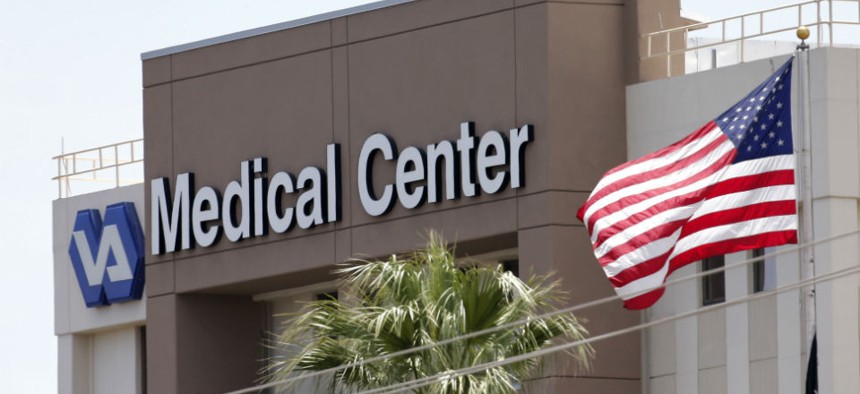VA Schedulers Failed to Fully Use Wait List Software Created in 2002

Matt York/AP
Ignored internal system at least once on 731 facilities probed.
More than 70 percent of 3,772 patient-scheduling staffers at 731 medical facilities in the Veterans Health Administration did not fully use scheduling software originally developed in 2002, according to a Department of Veterans Affairs report highlighting lengthy wait times for veterans seeking health care appointments.
Released yesterday, the audit of veteran access to VA health care detailed that 13 percent of VA patient schedulers interviewed indicated they received instruction (from supervisors or others) to enter a date different than what the veteran had requested in the appointment scheduling system. Eight percent of scheduling staff said they used alternatives to the official Electronic Wait List, known as the EWL. In some cases, schedulers were pressured to use unofficial lists or to engage in inappropriate practices in order to make wait times appear more favorable.
The audit report said there was at least one instance per facility in the examined 731 subjects in which staffers said they used alternatives to the EWL. As a result, “nationwide, there are roughly 57,436 veterans who are waiting to be scheduled for care and another 63,869 who over the past 10 years have enrolled in our health care system and have not been seen for an appointment,” according to the audit report.
In one hospital and six clinics served by the VA Phoenix Health Care System, the audit report charged it had identified 1,700 veterans waiting for a primary care appointment, but who were not on the EWL.
“Until that happens, the reported wait time for these veterans has not started,” according to the report. “Most importantly, these veterans were and continue to be at risk of being forgotten or lost in Phoenix HCS’s convoluted scheduling process. As a result, these veterans may never obtain a requested or required clinical appointment.”
This is far from the original objective the EWL had when it launched in 2002, according to the VA internal manual originally published in 2002. That manual stated: “The goal of the EWL is to provide care to the patient as quickly as possible. To facilitate this goal, patients may be placed on a wait list for a different team or even at a different facility."
But Acting VA Inspector General Robert Griffin told a House VA committee yesterday that “the issue of manipulation of wait lists is not new to VA and since 2005, the OIG has issued 18 reports that identified, at both the national and local levels, deficiencies in scheduling resulting in lengthy waiting times and the negative impact on patient care.”
Griffin told the nighttime hearing, which started 7:30 p.m., that only criminal charges against VA employees who manipulate the system would stop the practice. “Once someone loses their job or gets criminally charged for doing this, it will no longer be a game," he said.
In a related development, Acting VA Secretary Sloan Gibson announced Tuesday that VA officials will seek assistance from private health care executives, including leaders of the Mayo Clinic, Gartner Inc., and Kaiser Permanente, the largest nongovernment health care provider in the nation. Kaiser operates 35 hospitals and 4,321 clinics that treat 8.6 million patients a year.
VA wants to tap private sector expertise to help resolve the scheduling problem, Gibson said.
“Our top priority is to get our veterans off wait lists and into clinics,” he said. “We need to continue to examine the best practices of health care systems across the country to find immediate solutions for timely delivery of quality health care. VA must be at the forefront of access and innovation. Our veterans deserve nothing less.”






